In Berlin Tegel between the constantly rushing highway and industrial enterprises lies Berlin’s only civil Russian Orthodox cemetery. The cemetery is owned by the Brotherhood of St. Prince Vladimir.
During our wanderings through the city, we were drawn to this rather unusual cemetery. The area is not particularly large and unfortunately we could not look into the chapel due to a funeral service. Nevertheless, it was a very interesting visit that gave us a somewhat different impression of the cemetery.

How Berlin came to a Russian Orthodox cemetery
The Russian community in Berlin grew steadily in the 17th and early 18th centuries. With the opening of the Russian legation in the city, there was an additional desire for an Orthodox chapel.
At first, the community used private rooms, but from 1718 they opened a permanent chapel in the embassy’s rooms. When the embassy moved to new premises or was evacuated in times of war, the chapel moved as well. A process that, of course, was not particularly pleasant for the parishioners.
What the parish lacked for many years, however, was its own cemetery. It was not until 1890 that the Archpriest of the Embassy Chapel Alexei Maltsev, together with the Brotherhood of St. Prince Vladimir, began to look for a suitable site. Two years later, the congregation was able to buy a site of about 18,000 square meters, on which they also planned to build a place of worship.

A German architect was commissioned to build the church building. He planned a building inspired by St. Basil’s Cathedral in Moscow and unique in Berlin with its five onion-like domes.
In addition, a gatehouse and some farm buildings were built on the site. Here, those in need could find work in the nursery or the typesetting shop, which produced translations of Russian liturgical texts into German.

Why Russian soil lies in the middle of Berlin-Tegel…
Orthodox tradition stipulates that their dead should be buried in native soil. Berlin soil is not the soil of the homeland and so a solution had to be sought.

Emperor Alexander III arranged for 4000 tons of Russian soil to be transported to Tegel. This was collected from 50 different regions and brought to Berlin on 4 railroad trains. Thus, the entire area could be covered with a good 5 cm thick layer of earth from the homeland and the dead could be buried in good conscience according to tradition.
In June 1894, the official inauguration of the burial site finally took place.
Development of the Russian Orthodox community in Berlin
Before the First World War, the community established a library with 3000 volumes in the Bruderhaus Alexander III and exhibited icons and pictures in a history museum. A well-running economic enterprise developed, which made it possible to found other Orthodox churches in Germany.
World War 1 brought the business and parish life of the brotherhood to a virtual standstill. After the war, the parishioners began to use the Bruderhaus as a place of refuge for Russian emigrants. They built shelters, schools and laid graves in the cemetery for victims of the First World War and the Russian Civil War. The Russian Orthodox cemetery in Tegel developed into the final resting place of the Russian nobility, high-ranking officers, artists and intellectuals. During this period, many magnificent hereditary burial sites were built, some of which have been preserved to this day. But, of course, the cemetery was open to all members of the community and anyone could be buried there in native soil.

During the Second World War, some of the buildings of the brotherhood were severely damaged. The archive, now known beyond the borders of the city, was lost and the art treasures were looted. Gravesites also showed damage after the war and they were repaired later. If you enter the cemetery today, you can see nine bells at the entrance gate in Wittestraße. These are bells that were stolen by the German army and transported to Germany. They were seized by the Red Army after the war.
After the war, the brotherhood had to hand over the cemetery to the new parish of the Moscow Patriarchate in Berlin. For many years they fought to get their property back and in 1967 the court finally ruled in favor of the congregation. Under pressure from the Soviet government, the French occupation forces, in whose territory the site was located, prevented the execution of the judgment. In 1970, the brotherhood had to give up the fight. The financial means were exhausted and so they sold the area to the city of Berlin. The latter had the Bruderhaus demolished and converted it into commercial space. The cemetery and the church were given to the Moscow Patriarchate.

And today?
In the late 20th century the cemetery became less and less important. Many of the gravesites fell into disrepair. In the meantime, emigrants living in Berlin are once again buried there. The congregation was able to restore the listed church with the help of private donations. Since 2006, the grounds and the church are once again in the possession of the brotherhood.

Russian Orthodox Cemetery – a tour
We entered the grounds from Wittestraße through an old entrance gate. Directly behind it, numerous cars were parked during our visit.
The chapel of the cemetery with the beautiful name St. Constantine and Helena Church stands in the middle of the grounds. I think it is beautiful. Four blue onion domes at each corner of the building and in the center a high tower with an onion dome on which the St. Andrew’s cross stands dominate the overall impression. If you look a little closer, you can see that the St. Andrew’s cross has a double crossbeam.

On a tour of the grounds, one immediately notices the white St. Andrew’s crosses, but also the plain wooden crosses. Some stand on ivy-covered grave mounds, others at small gravesites bordered with stones. Traditionally, these are laid out in an east-west direction. The crosses are made up of three beams, the lower one angled to form a line from the earth toward the sky. I once read that it is supposed to symbolize a signpost to heaven.

However, I also discover grave sites that are more reminiscent of the grave designs common in the Berlin area. Here the gravestones stand at the bordered grave places. What else strikes me is that there are relatively few conspicuously planted graves. Many of the grave sites are overgrown with ivy or grass or have a stone cover, only a few graves have flowers on them.
The Russian Orthodox cemetery is a remarkable place that brings some greenery and a lot of peace to an otherwise very dreary area.
Address:
Wittestraße 37,
13509 Berlin
Opening hours:
8-17 h









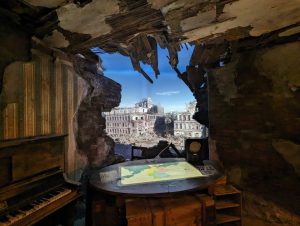





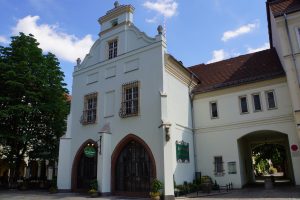

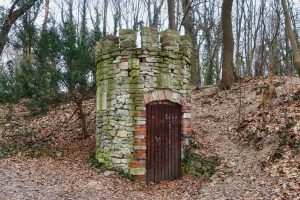
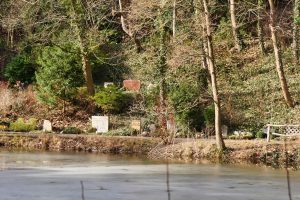
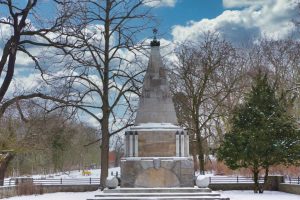










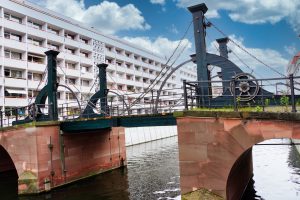
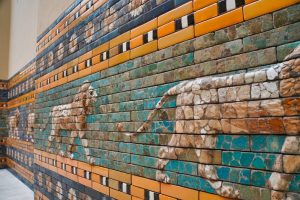



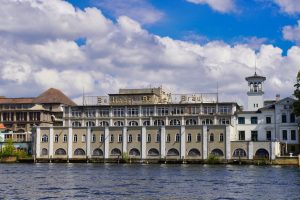









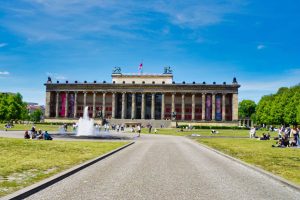





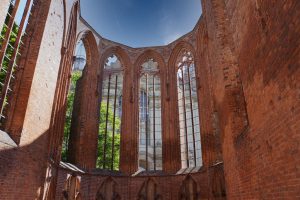

























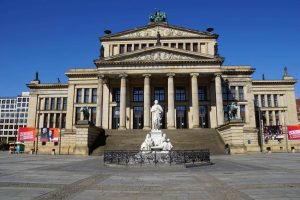







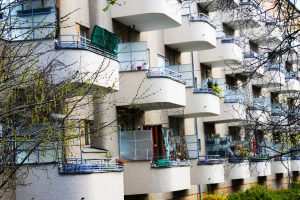










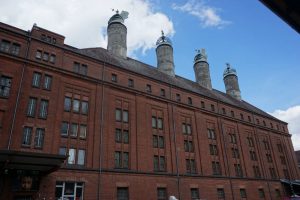





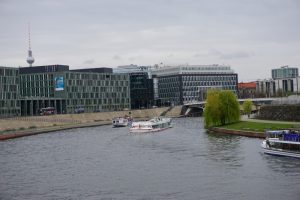
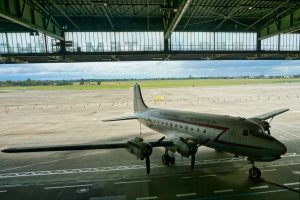








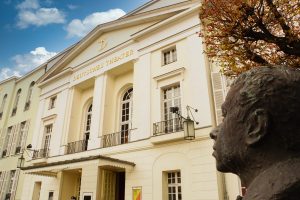


















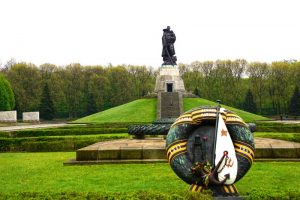














Leave a Reply